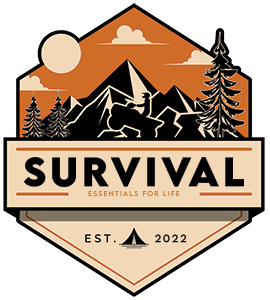The idea of going thirsty when an emergency breaks out is terrifying. Humans can only survive about three days without water, as our bodies need this life-saving liquid to continue functioning at its peak. In an emergency, staying on top of your game is vital, so how do you ensure you’ll have plenty of drinking water to get you through? Long-term water storage has, thankfully, gotten much easier as technology progresses, and we have a few ideas to help keep you hydrated!
To keep you and your family healthy, the CDC recommends storing a gallon of water per person, per day, in at least a two-week supply. Storing excess is also recommended for those that are pregnant, ill, or live in hotter climates.
Good Old Water Bottles
Keeping cases of bottled water isn’t the most environmentally-conscious option, but it’s quick, easy, and inexpensive. Stocking up on cases of store-bought water can work perfectly if you’re preparing for an emergency for you and your family, though be conscious of the expiration dates on the pack.
Non-Store Bought Water
In the event of store-bought water being unavailable, large, food-grade containers can be sterilized with chlorine bleach after a good wash with dish soap. Glass or stainless steel containers can be used, however, chlorinated water will corrode the stainless steel, so avoid adding chlorine until you’re ready to use it. Large, UV-resistant 55-75 gallon water containers are ideal for water storage long term, as the hard, colored plastic prevents sun exposure and algae. Finding space for these large containers can be difficult, but they are greatly effective in storing large amounts of water.
Tap Water
Tap water can be stored as-is for six months without great risk, but in drinking it beyond that timeframe, you run the risk of exposure to water-borne illnesses. Keep water-purification tablets stored away somewhere dry and dark.
Rain/Repurposed Water
Collecting water from rainfall or other sources is popular among homesteaders and those living off the grid. This should be considered a last resort for those with bottled or tap water available, however, because purifying it can be time-consuming and risky if done wrong.
Ensuring your collection container is clean and food-grade is critical, along with placement and filtration. Collection from seamless downspouts off of a corrugated, pre-painted roof is considered safe and effective, so long as your roof and gutters are clear and power washed every six months. Downspouts can be affixed to leaf catchers before your storage system, and as your first method of filtration, it’s vital to keep your catchers clear of debris as often as possible. Pantyhose works well for finer debris-filtering following your leaf-catcher, however, this is where the simple parts of water collection end! Be sure to check our write-up on purification methods for non-potable water for more information and ideas on making your water safe to drink.
